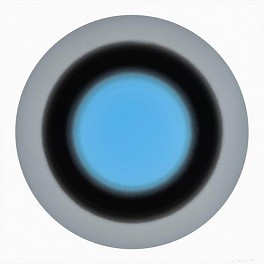BIOGRAPHY

Rondinone is recognized as one of the major voices of his generation, an artist who composes searing meditations on nature and the human condition while establishing an organic formal vocabulary that fuses a variety of sculptural and painterly traditions. The breadth and generosity of his vision of human nature have resulted in a wide range of two-dimensional and three-dimensional objects, installations, videos, and performances. His hybridized forms, which borrow from ancient and modern cultural sources alike, exude pathos and humor, going straight to the heart of the most pressing issues of our time, where modernist achievement and archaic expression intersect.
Rondinone's work is held in the following collections: The Bass Museum of Art, Miami; Galleria Nazionale d'Arte Moderna e Contemporanea, Rome; Migros Museum für Gegenwartskunst, Zurich; Musée d'Art Contemporain, Strasbourg; Musée national d'art moderne - Centre Pompidou, Paris; National Gallery of Canada, Ottawa; New Museum, New York; The Art Gallery of New South Wales, Sydney; The Museum of Modern Art, New York, among others. In 2007, he represented Switzerland at the Venice Biennale.
Sun Paintings
Begun in 1992 and spanning three decades, the Sun works reflect Rondinone’s interests in nineteenth-century German Romanticism and Tibetan mysticism as vehicles to explore natural phenomena and interior states. These large-scale paintings begin as small, spontaneous watercolors and record the colors he perceived when looking at the sun, and likens the practice to Surrealism’s automatic drawings and writings as a way to reveal the unconscious.
The watercolor sketches are then transferred onto large canvases with a spray gun and replicate the mesmerizing effect of colors bleeding onto one another. All Sun paintings are titled in Rondinone’s native Swiss-German language after the date they were created. Similar to a diary entry, they are a representation of the artist’s state of being on each respective day. Rondinone’s Sun paintings also pay homage to artists in the mid-20th century Pop and Post-Pop movements, such as American painters Jasper Johns and Kenneth Noland, who created their own versions of circular paintings.
